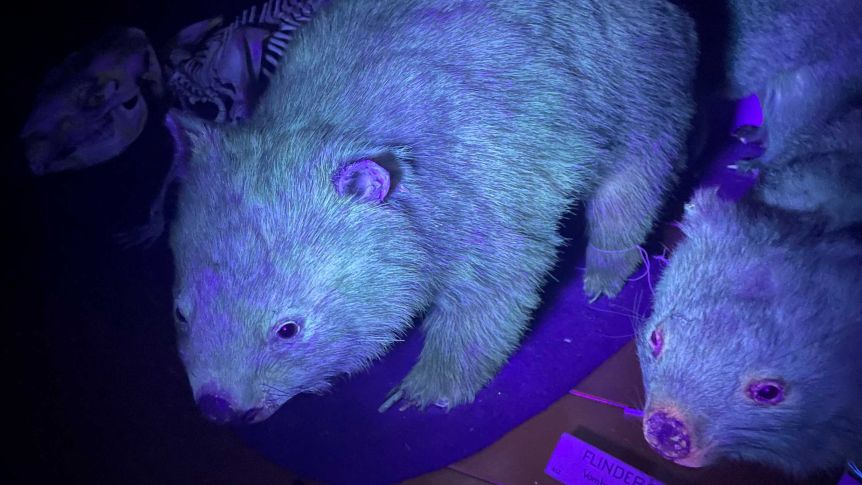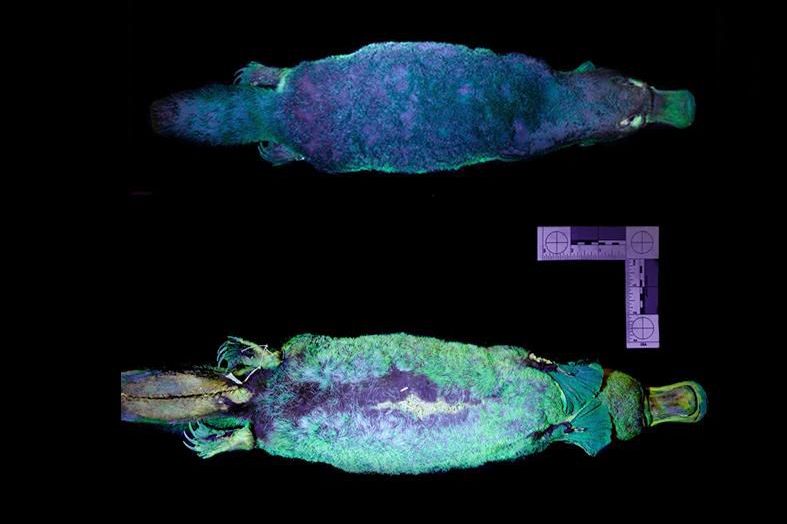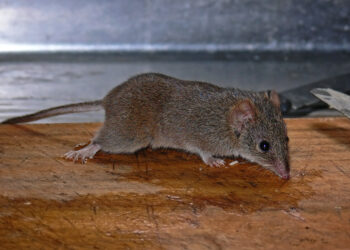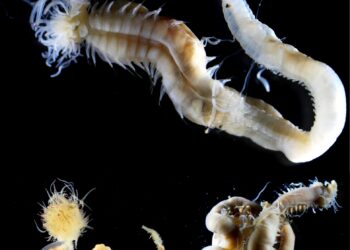
Ever seen a wombat under a blacklight? Not a lot of people have, it seems — it’s only recently that scientists have found that wombat fur is actually biofluorescent, meaning it absorbs blue light and then re-emits it as the color green. The same investigation found that echidnas, possums, and other mammals are biofluorescent.
An accidental discovery revealed that marsupials must love a good rave
It was just a couple of weeks ago that American researchers at the Field Museum accidentally discovered that platypuses glow in dark/purple when UV light is shone on the peculiar mammal’s fur. Now, a new creature can join that lit club: the wombat.
Biofluorescence has long been known to occur in some insects and sea creatures, but no one really thought of verifying the pink-glowing phenomenon in mammals. Naturally, everyone was pretty amazed — and it turns out biofluorescence in mammals is a lot more common than we thought. At least among Australian marsupials.

Spurred by the serendipitous discovery of the biofluorescent platypus fur, the curators of the Western Australian Museum decided to shine UV light on some of their own museum specimens.
Much to their surprise, out of two dozen mammals in their collection, around a third of them had glowing fur. This includes the platypus, echidna, bandicoots, bilbies, possums, some bats, as well as the iconic wombat.
Most of these animals, including wombats, are either nocturnal or crepuscular (active at dawn or dusk). So perhaps the biofluorescence may improve their survivability, especially since ultraviolet light is more prevalent at dusk and dawn.
“Perhaps they are able to see much more than we are able to see,” Kenny Travouillon, the Western Australian Museum curator of Mammalogy, told Science Alert.
“Predators don’t seem to glow. I think this is because if predators could be seen, they would lose all chance of catching their prey,” he added.
Then again, a lot of marsupials are nocturnal, so perhaps something else may explain the evolutionary drive for biofluorescence. Since these observations have been made in museum specimens on a tiny sample size, perhaps field investigations could provide more answers. In the future, researchers at the Australian Museum want to do just that with the help of different lights.






